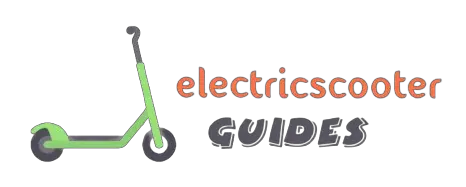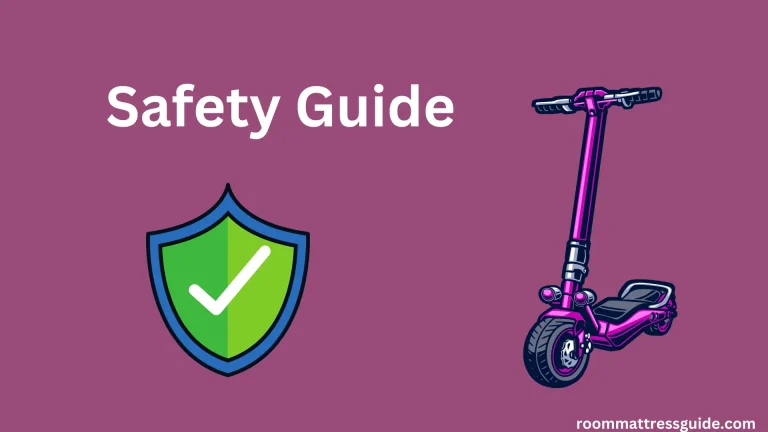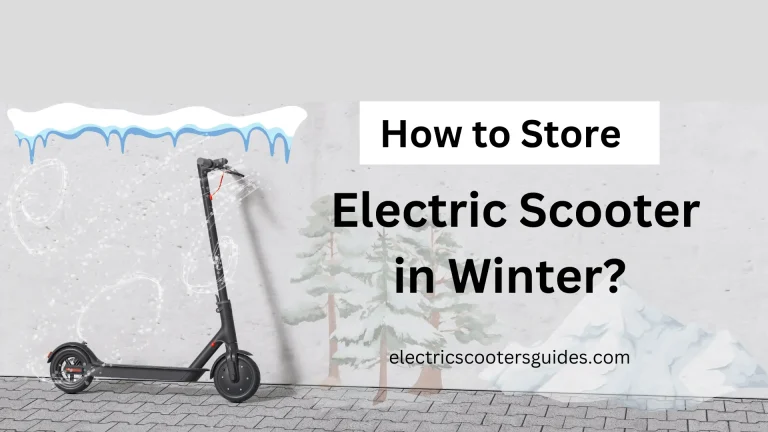How to Charge Electric Scooters Without Chargers?

Riding an electric scooter can be super fun, but it’s a bummer when the battery runs out. That’s like having a toy without batteries – not much fun! So, it’s important to keep your electric scooter’s battery charged up.
But hey, life happens, right? Sometimes we misplace the charger or it stops working out of the blue. That can leave us scratching our heads, wondering how on earth we’ll charge our scooter without it. In this guide, we will discuss how to charge electric scooters without chargers.
Well, fear not! I’m here to share some clever tricks with you. Let’s dive into five handy ways you can juice up your electric scooter even when the charger’s nowhere to be found. So, buckle up (or should I say, plug in?), because we’re about to explore some cool alternatives!
Safety Measures to Charge Your Electric Scooter Without Charger
Let’s talk about staying safe while charging your electric scooter without a charger. Before we dive into the methods, we need to talk about some important safety steps. These not only keep you safe but also help protect your scooter’s battery, especially when you’re charging it unconventionally.
Use the Right Voltage and Current: This is super important! Before you start anything, make sure you know the correct voltage and current for your scooter’s battery. Using too much voltage can make things heat up too much and damage the battery. And if the voltage is too low, your battery won’t charge properly. Current is measured in amps, by the way. Check your scooter’s manual or ask the manufacturer to find out the right voltage and current for your battery. For instance:
- Xiaomi M365 Electric Scooter needs 42 volts and 1.7 amps.
- Ninebot ES2 Electric Scooter needs 42 volts and 1.7 amps too.
- Razor E300 Electric Scooter needs 24 volts and 1.5 amps.
- Segway Ninebot MAX Electric Scooter needs 42 volts and 3 amps.
Keep Your Scooter Dry and Clean: Once you’ve got the voltage and current sorted, find a good spot to charge your scooter, especially if you can’t remove the battery. Keep it away from water and mud to avoid any accidents or damage while charging.
Check the Charging Process: While your scooter is charging, it’s a good idea to keep an eye on it. Check every 30 minutes or so to make sure everything’s going smoothly. You want the current and voltage to stay steady to avoid any sudden changes that could harm your battery.
By following these safety steps, you can charge your electric scooter without a charger like a pro while keeping yourself and your scooter safe and sound. You should also know how much electric scooters use electricity.
Portable Charging Cable to Charge your Electric scooter Without Charger
Creating a portable charging cable for your electric scooter is essential if you find yourself without a charger. Don’t worry, it’s easier than it sounds! Here’s what you’ll need and how to do it:
Materials:
- Charging socket matching your scooter’s model
- Three-ended electric wire (at least 3 meters long is ideal)
- Plug
- Electrical tape
Steps:
- Socket Setup: First, insert the wire into the charging socket.
- Secure with Tape: Wrap the wire tightly with electrical tape to keep it in place and prevent any loose connections.
- Attach the Plug: Fix the plug securely to the other end of the wire.
- Final Check: Once everything’s connected, give it a quick once-over to make sure it’s all secure and ready to go.
Voila! You’ve now got yourself a handy charging cable that you can use in a pinch.
Now, let’s explore five practical methods to charge your electric scooter when you don’t have a charger on hand. With this cable prepped and ready, you’ll be all set for any charging emergencies that come your way.
How to Charge Electric Scooters Without Chargers?
Charging your electric scooter without a charger might sound tricky, but there are several methods you can try out. Let’s break them down:
- Portable Chargers: These are handy and safe to use since they’re designed to regulate voltage and current. However, you might not get a full charge unless you have a high-wattage portable charger.
- Solar Panels: Using solar power is eco-friendly and cost-effective. However, it relies on daylight and may take longer to charge. Also, voltage stability can be an issue, so consider using an MPPT charge controller for better control.
- Variable Power Supply: This method is straightforward but requires access to a variable power supply. You’ll need to remove the battery from your scooter, which can be time-consuming.
- Charging Stations: If you’re lucky enough to find a charging station with compatible cables, it’s a convenient option. Just be aware that not all places have these stations, and the cost might be higher than charging at home.
- Fast Battery Charging: Some companies, like GBBatteries, offer fast-charging technology. They claim to charge scooters in just 10 minutes using adaptive pulses. While promising, the long-term effects on battery life aren’t fully known yet.
Each method has its pros and cons, so choose the one that works best for your situation. Experimenting with different methods can help you find the most efficient way to keep your scooter juiced up, even without a charger on hand.
Conclusion
In conclusion, while charging electric scooters without chargers might seem challenging, there are various inventive methods available. From portable chargers to solar panels and fast battery charging technologies, there’s a solution for every situation. By exploring these alternatives, scooter enthusiasts can ensure they’re never stranded with a dead battery, making their rides more convenient and enjoyable.






